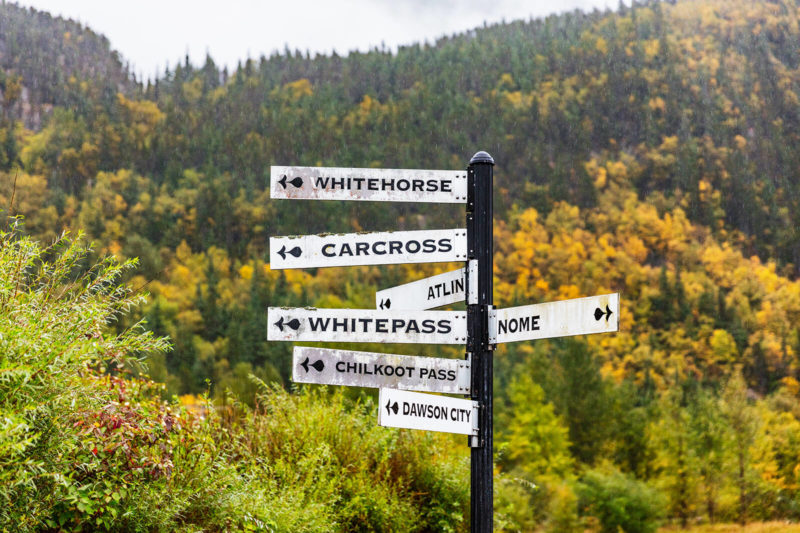Yukon tourism operators were served a good news sandwich in February, with the federal government eliminating PCR testing requirements for international arrivals and the confirmation of Condor flights from Germany arriving in Whitehorse every Tuesday all summer long. Add a slice of the expansion of designated international airports to include Whitehorse, and things are looking up.
As Neil Hartling often says, however, “the devil is in the details.”
Hartling is president of Tourism Industry Association of the Yukon (TIA Yukon). He has been consistent in his message that the pandemic “has put our industry on life support,” and that government help is still desperately needed.
Even before the pandemic, Yukon tourism as a sector has multiple dependencies for businesses to stay viable. The competitive global marketplace, the short season, and the weather are challenges the Yukon industry has adjusted to and accepted.
READ MORE: Why this Alaska-to-Yukon hike should be on every adventurer’s list for 2022
Other dependencies are new or have been exacerbated by the pandemic. Issues such as waning resident support for tourism, slower processing times for international arrivals and labour shortages require more than adjustments, they need active interventions. These are front of mind for Hartling.
It appears from listening to two TIA Yukon calls in February that federal and Yukon politicians are on it.
TIAY has hosted weekly meetings since the very beginnings of COVID-19 and only recently switched to biweekly. Over 50 attendees listen to reports from Yukon’s MP, federal and territorial government officials and an array of presenters ranging from neighbouring tourism associations to wellness coaches and insurance providers.
READ MORE: 3 Epic highways for your next Yukon road trip
The Yukon’s Tourism minister, Ranj Pillai, and MP Brendan Hanley are frequent attendees and were on both calls Feb. 4 and 18. The federal tourism minister, Randy Boissonnault, joined the call on Feb. 4.
Boissonnault championed safe tourism and encouraged everyone to take advantage of what has come to be known within the industry, as the coming period of “revenge tourism.”
He explained that the new phrase means that people “are going to want a different experience they have never had before because they are not sure when they’re going to be able to travel again.”
READ MORE: The Alaska Adventure Bingo Card: How many squares could you check off?
He also promoted a new federal program with $1.4 billion to help operators get themselves digitized and on electronic platforms.
He pointed to a new program that would provide money to businesses to improve HVAC (heating, ventilation and air conditioning) systems as an improved “defense mechanism” against COVID-19.
It’s all part of a defensive strategy to keep people safe while opening up the economy.
Two weeks later on the Feb. 18 call, Hanley said he was still advocating a cautious approach.
“I think it’s right to still be measured. It’s obviously become quite a political struggle to justify not letting go of everything, but I think wise advice is — let’s keep Canada as a safe place to be.
“The pandemic hasn’t gone away, and no one really knows what endemic means. It’s likely going to be continued spikes, valleys and dips,” he said.
Hanley wants the Yukon to stay safe and remain vigilant. Right now, he is watching the growth rate of Omicron BA.2 in Denmark and Ontario. Over half the cases in Denmark are now BA.2 and are increasing rapidly in Ontario. As to the possibility of a spring spike, he says, “right now it’s a watch and wait scenario.”
While officials may be watching and waiting, it seems travellers are not.
Robin Anderson, global marketing manager for the Yukon government’s department of tourism and culture, said that visitor estimates in Skagway remain at the same levels forecast before the pandemic, which means nearly one million people departing from cruise ships this coming summer. For cruise ship arrivals in Vancouver, bookings are up eight per cent over pre-pandemic years.
What concerns members of the industry is that the processing time at the international border at the Fraser summit is bound to slow considerably from one minute, 30 seconds per person pre-pandemic, to significant and unquantifiable delays from the new processes.
Additional border staff will be needed to speed things up, which means a need for additional housing, plus the challenges of an internet connection for mobile phone apps working on a mountainous summit.
Industry members realize that timing is everything for day excursions out of Skagway with their set departures times for buses, trains and ships. Not enough time has always been the reason the buses don’t linger in Carcross. More time spent in the wind at the summit means benefits have less time to accrue in Yukon. There were approximately 500,000 international border crossings into Yukon recorded in 2019.
Anderson says that cruise ship passengers are considered lower value than tourists from Germany who tend to spend more and stay longer, but their sheer volume creates significant revenue for some businesses. He adds that the cruise passengers who travel through Yukon by coach spread benefits throughout the territory.
Meanwhile, industry keeps putting its best hopes forward. The department keeps advertising in markets around the world to attract visitors.
The Yukon government contributes $6.5 million annually to marketing the Yukon as a destination in 12 different countries around the world. People in British Columbia and Yukon might have seen the new Yukon ad during the Superbowl. Anderson said that one ad cost about $15,000. It was part of a $1.4 million ad buy across Canada, spent to encourage Canadians to come to the Yukon.











 Vancouver International Mountain Film Festival marks 25th anniversary
Vancouver International Mountain Film Festival marks 25th anniversary